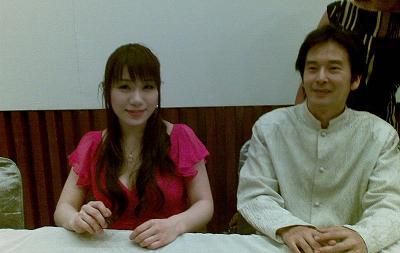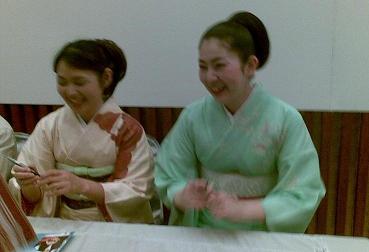
When the lights were on, Risa Kataoka performed John Newton’s inspiring song in koto, a traditional Japanese stringed musical instrument.
Kataoka was a member of the J-Classics quartet who were flown in by the Japanese government as part of the celebration of Philippine-Japan friendship this month. The three others were violinist Ayako Ishikawa, flutist Takako Hagiwara and pianist Susumu Aoyagi.
The repertoire was predominantly classics but included folk favorites like “Amazing Grace” and Lucio San Pedro’s “Sa Ugoy ng Duyan”. Performed by the four visiting musicians with the special participation of Sixto “Butch” Roxas in the guitar, it was understandably the evening’s favorite. Even if we felt Roxas downplayed his part, probably to give the spotlight to the guests artists.
A faculty member of the University of Santo Tomas Conservatory of Music, Roxas studied classical guitar at the Schola Cantorum under Madam Dumalaque.He received a generous grant from the Agencia Espanola to study under maestro Josep Henriquez in Barcelona, Spain.
Aoyagi was amazing. Physically slight, he was a dynamo on the piano. While playing Frederick Chopin’s numbers, we were reminded of Adrien Brody in the movie “The Pianist”.
His “Hungarian Rhapsody” by Franz Liszt sent the audience in rhapsody.
The Nicaragua-born Aoyagi made his orchestral debut at age nine with the FortWorth Symphony conducted by John Giordano. He has won numerous awards among them the 1992 Marguerite-Long-Jacques-Thibauld International Competition in Paris and the 28th Chopin Society Awards of Japan in 2002. Since 2001, he has been associate professor of piano at the Tokyo University of Arts.
Ishikawa, the violinist, is charming and gorgeous. She earned her Bachelor of Music Degree with First Class honors from the Sydney Conservatorium of Music. She received the Australian Musician’s Academy Award in 2001 and was judged “the best performer of 2003” at Australia’s Overall Instrumental Winners’ Contest.
Dressed in a bright pink gown, her whole body played the music with her violin as when she performed Astor Piazzolla’s “Libertango.” She told the audience to imagine that they were in a park dancing the tango.
When she performed Michio Miyagi’s “Haru no Umi” with Kataoka, she explained that the piece was originally composed for a traditional Japanese woodwind instrument. But a French musician, she said, arranged it for a violin. The result is a delightful fusion of Asian melody in a Western instrument.

Hagiwara, who said she has been stuffing herself with adobo since she arrived in Manila, explained that to play the flute, she needs to be able to breathe well, which is quite difficult wearing the kimono. Her music evoked the Latin fire and lust of “Carmen” and it would have been wonderful to see her also look the part.
Japanese Ambassador Makoto Katsura said he was happy to know that there’s was a good crowd in the previous evening’s performance, which was open to the public.
Just proves that some of the nice things in life are free.
By the way, other activities in the Philippine-Japan Friendship celebration include Japanese silent film festival at the Shangrila Plaza starting July 30 and J-Pop Anime Singing competition on July 25, 2 pm at the Market!market! In Taguig City.
For information call Japan Foundation 811-61-55 to 58 or email:email@jfmo.org.ph
They have such cute names. Yuko may have her own translation of their names, I have mine and they all refer to Gloria.
Ayako Ishikawa – I don’t like you cuz you’re easy
Takako Hagiwara – puzzled why she’s always abroad
Susumu Aoyagi – your boobs sag
Bwahahahahaha! Bilib ako sa translation mo, Tongue.
____
I always enjoy listening to Lucio San Pedro’s “Sa Ugoy ng Duyan”. I miss my mom.
Galing mo! O, inspired ka lang kay Imp? May buhay din pala si Ellen, labas sa kanyang paboritong topic. A welcome respite!
Dapat naman, di ba? It’s all for a worthwhile life.
Who is Imp?
Tongue,
You made me laugh with your translation of the names of the Japanese artists. Names here may sound and spelled the same in Roman letters but they have different meanings depending on how they are written in Kanji (Chinese characters). It reminded me of my cousin, another third generation Japanese-Filipino, who would change the Japanese places here to Filipino words so she could remember them as in Ofuna that she would say, “Upuna,” or when I could ask for a bargain, and she would say, “Nakamura ka” although our Japanese surname in fact was “Waki.”
I think it is good na ineentertain ng japan ang craze dito sa japanese music in fact may jpop singing contest na gawa ng japanese embassy katatapos pa lang ang audition.